
FARM MACHINERY & EFFICIENCY
11/10/17 — Heydon Hatcher
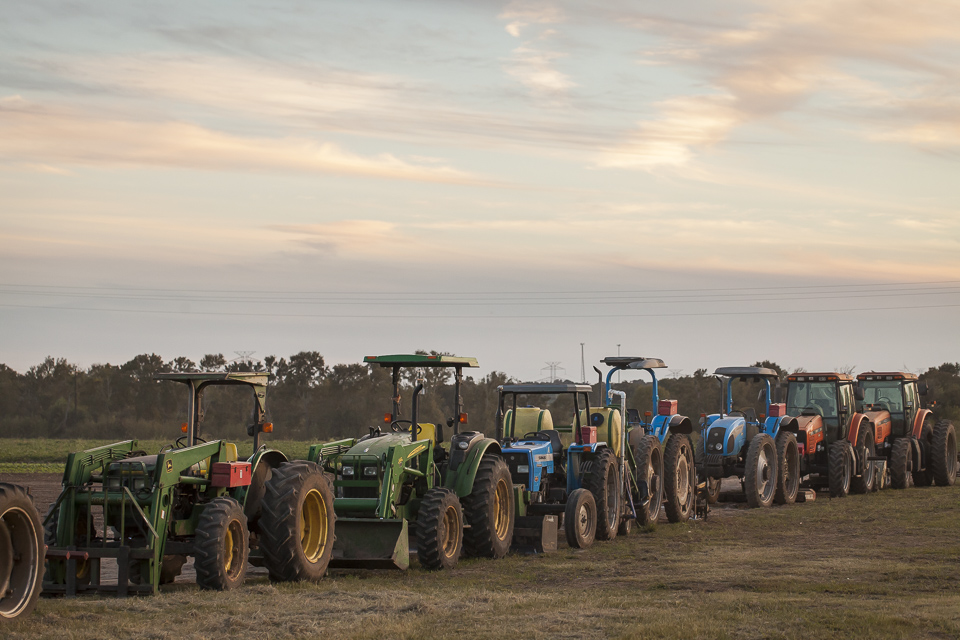 Tractor line-up. Photo by Scott David Gordon.
Tractor line-up. Photo by Scott David Gordon.
As we move towards wintertime, we usually pause and take stock of our machinery. We figure out what needs maintenance and what needs repair. Oftentimes if a machine has a pre-existing issue, we will push through planting season with it, despite the urgency of its ailing state. However, since we've recently finished planting, we have ample time to do those much-needed, more laborious and time-consuming fixes.
On the farm, we have all different kinds of equipment made for all sorts of tasks. This helps us immensely with efficiency, and if organic farming is going to be affordable and accessible, machinery is the key to helping us get as much done as possible during the work day especially on a farm of our scale. In farming, we need specialized equipment, just like we need specialized people with specific skill sets. And boy do we have some specialized vehicles and implements on the farm.
A few of the more interesting applications of machinery on the farm.
The green bean picker - this machine’s sole purpose is to pick green beans. The reason for that is that it’s super labor intensive to pick all those little green beans that are hiding in leaves. With three people we can harvest large swaths of green bean crops that would otherwise take us all day plus a lot more people.
 Green bean picker. Photo by Scott David Gordon.
Green bean picker. Photo by Scott David Gordon.
 Green bean picker. Photo by Scott David Gordon.
Green bean picker. Photo by Scott David Gordon.
Our harvest trailers were an innovation that was pioneered on the farm. We use a special Landini trailer which is necessary because you can drive over crops without disturbing them because of the tall wheels. Then we attach the harvest trailers which were in-house welded at our shop. Our harvest trailers have been revolutionary for summertime farming, and in this specific situation, it aids in getting the produce immediately out of the sun post-harvest and underneath a canopy for some shade. It also generally reduces the backbreaking work for our field crew as they can harvest alongside the vehicle since the arms on the vehicle reach out 5 rows wide.
 Harvest trailer. Photo by Scott David Gordon.
Harvest trailer. Photo by Scott David Gordon.
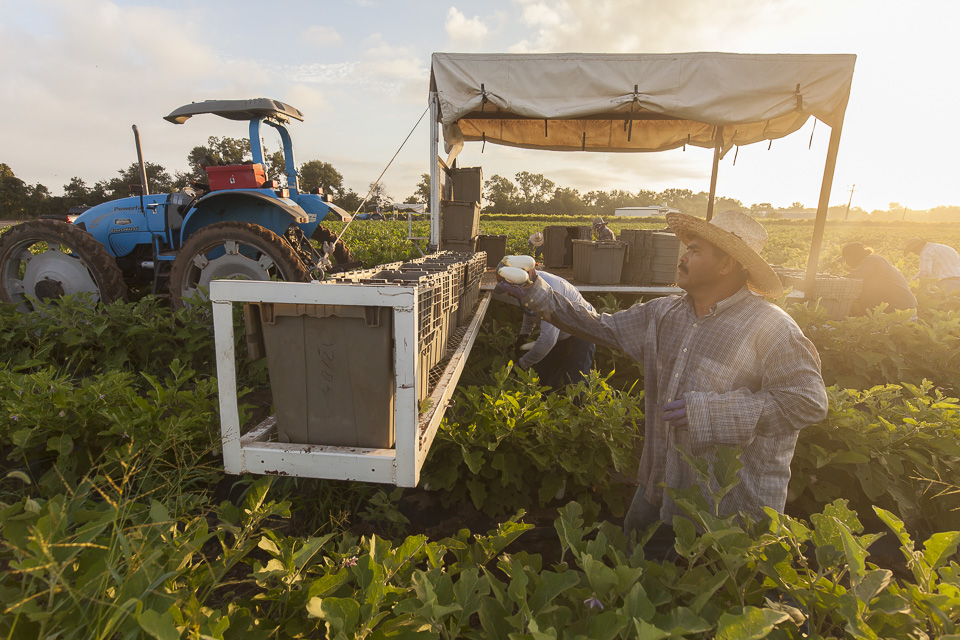 Harvest trailer in action. Photo by Scott David Gordon.
Harvest trailer in action. Photo by Scott David Gordon.
Soil preparation machinery... there’s a lot of very specialized equipment in this process. When we start the bed-making process, we usually rip a block of soil depending on what the block was used for previously. This process gets down really deep, creates better drainage, and makes space for new roots to set. After this, we usually disk the field. This slices up the soil, breaks up clods, chops up plant matter and residue so that it can be more easily incorporated into the soil. Next, we use the listers, which start shaping the beds. It pulls soil from the furrows and dumps it into the center of the row. We have single listers and triple listers on the farm. This implement scoops soil and keeps it in the center -- so we have the beginnings of a raised bed, albeit a very, very rough one. After we list the beds, we usually add fertility. We use the compost spreader for this which looks like a big red bucket wagon. It spreads the compost at an even rate across all the fields so it’s all very equally distributed. Then comes the tilling. The tiller has tines (just like a regular garden tiller) which help incorporate the fertility. The last step is the bed-shaper which goes over the top of the bed and has a very fine-tooth. It creates perfectly smooth, perfectly shaped beds. It is the finishing touch before we go through and lay drip tape.
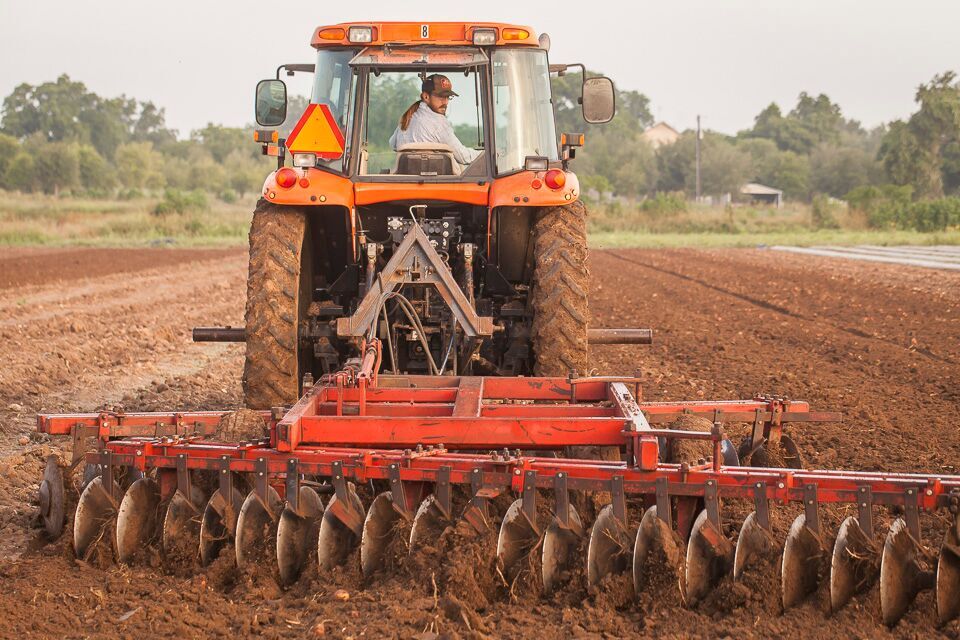 Disker. Photo by Scott David Gordon.
Disker. Photo by Scott David Gordon.
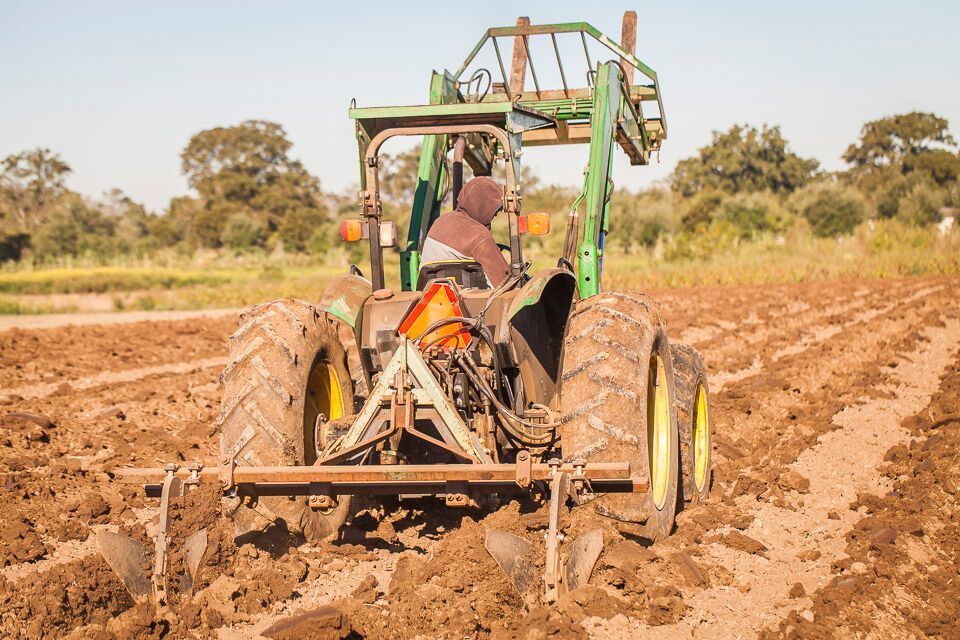 Lister. Photo by Scott David Gordon.
Lister. Photo by Scott David Gordon.
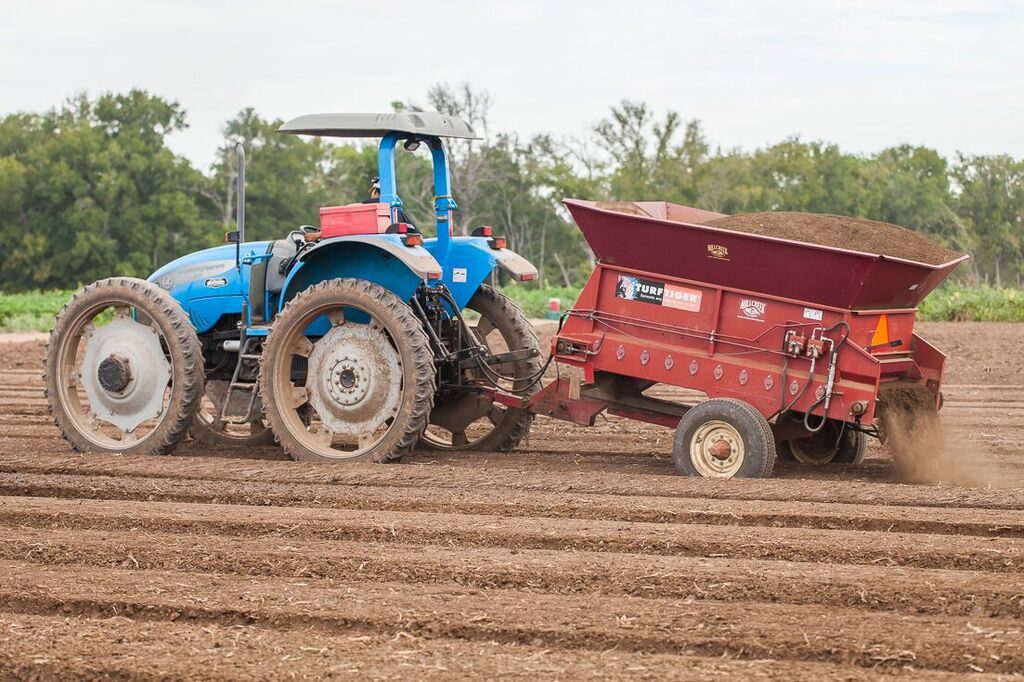 Compost spreader. Photo by Scott David Gordon.
Compost spreader. Photo by Scott David Gordon.
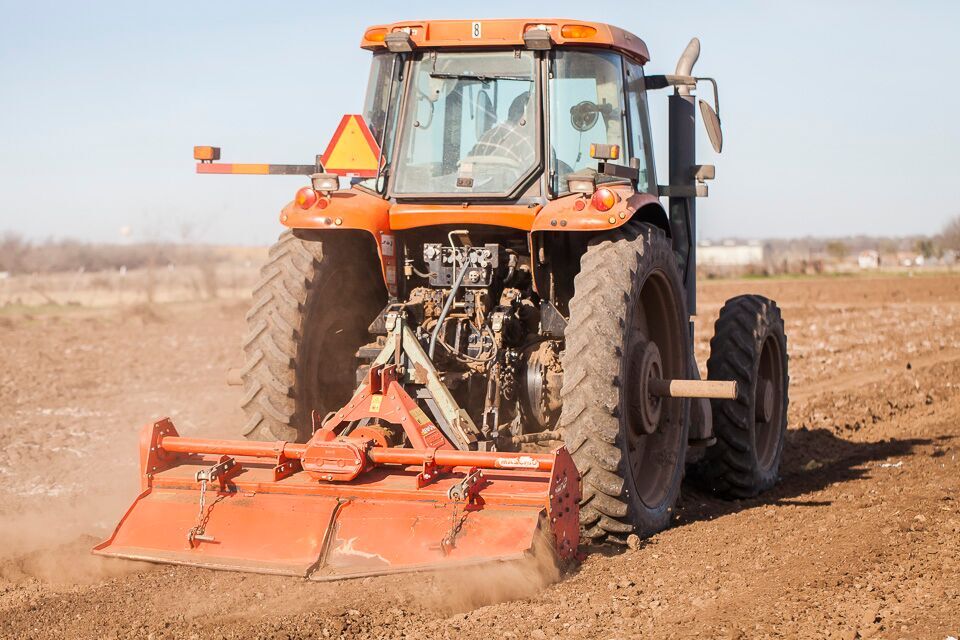 Tiller. Photo by Scott David Gordon.
Tiller. Photo by Scott David Gordon.
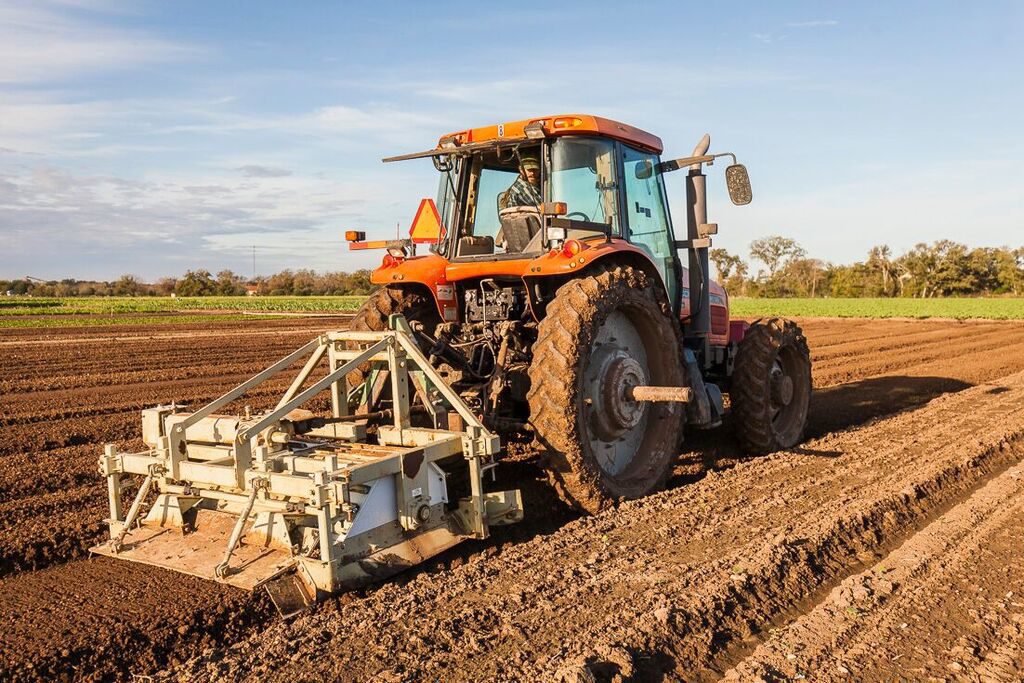 Bed shaper. Photo by Scott David Gordon.
Bed shaper. Photo by Scott David Gordon.
We have many different kinds of tractors and utilize them for soil preparation, but in addition to that, many other things. The John Deer’s are much lower and squatter, making them powerful and multipurpose vehicles. They are good for chores, transplanting, towing harvest trailers, for moving bulk bins, digging sweet potatoes or root crops, and for any type of lifting. Speaking of digging potatoes, we also have an implement that digs and aids in uprooting the potatoes for harvest. Pretty cool? See the photo below for some potato digging action.
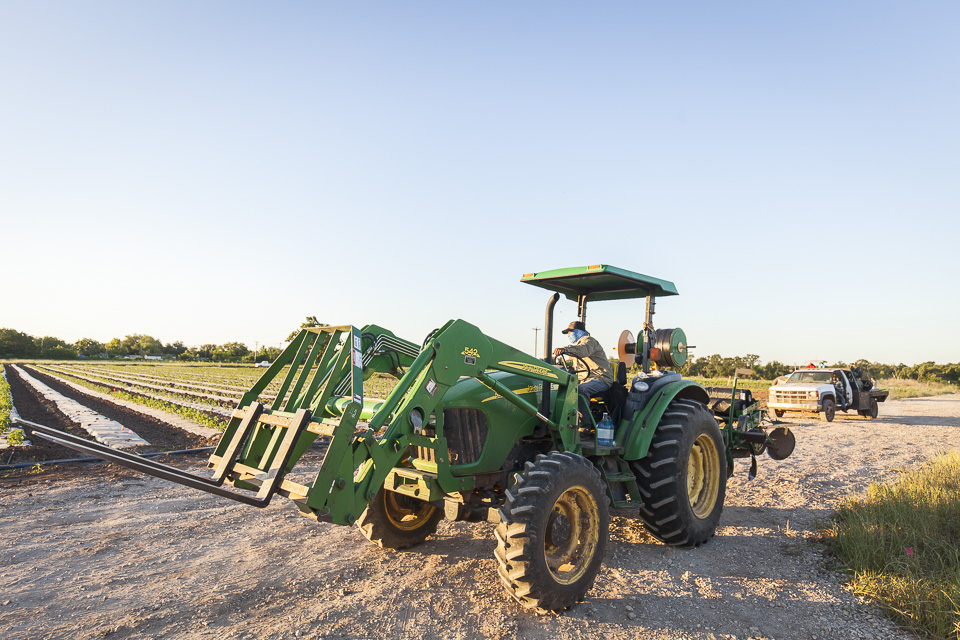 John Deer. Photo by Scott David Gordon.
John Deer. Photo by Scott David Gordon.
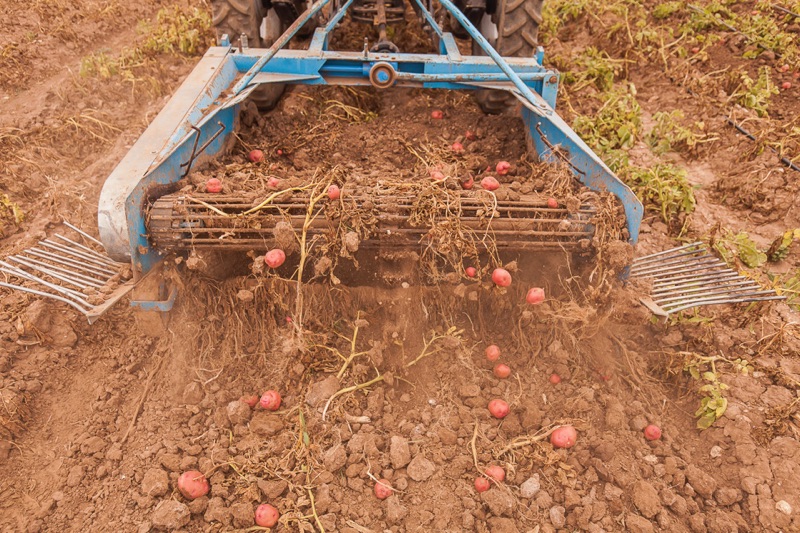 Potato harvester. Photo by Scott David Gordon.
Potato harvester. Photo by Scott David Gordon.
The Landini is great for spraying, harvesting, and seeding with the vacuum seeder. It is the only tractor that can pull the aforementioned green bean picker and can drive over the crops without damaging them because of their tall wheels.
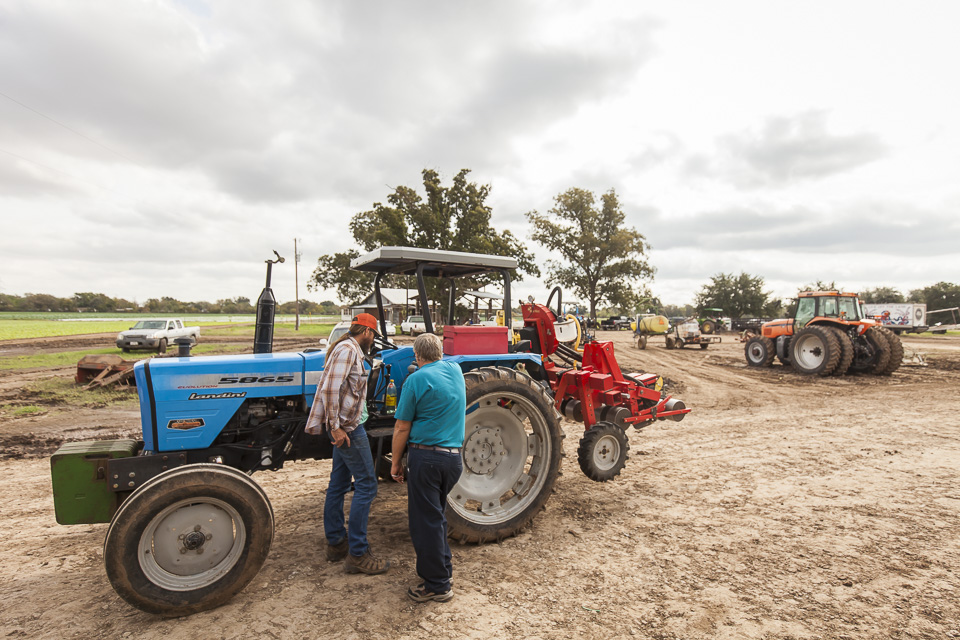 Landini. Photo by Scott David Gordon.
Landini. Photo by Scott David Gordon.
Our ABCO tractors are the spaceships of the farm. They are our most powerful, fully air-conditioned, and most-expensive tractors we use. Operating these tractors involves quite a few joysticks, and only our most experienced tractor drivers operate these. We use this tractor for ripping, tilling, and to pull the triple listers.
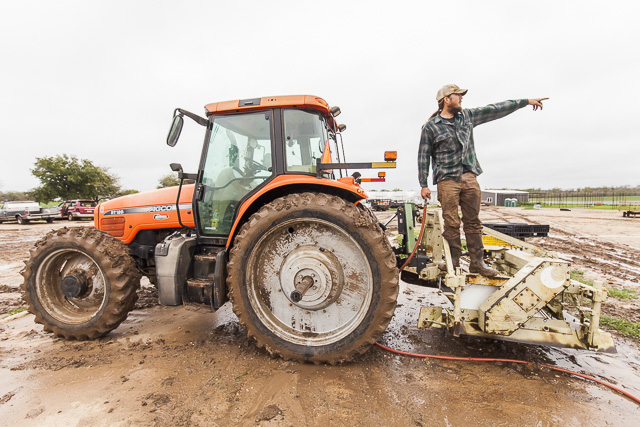 Montana on an ABCO. Photo by Scott David Gordon.
Montana on an ABCO. Photo by Scott David Gordon.
We use two different transplanters depending on the crop. We have the Rain-Flo, which is the more common transplanter. It has two seats and is more frequently used on the covered beds. The Lannen transplanter is our other transplanter and is utilized for bare ground planting. It has four seats and little shoots that you drop the transplants to go directly into the ground.
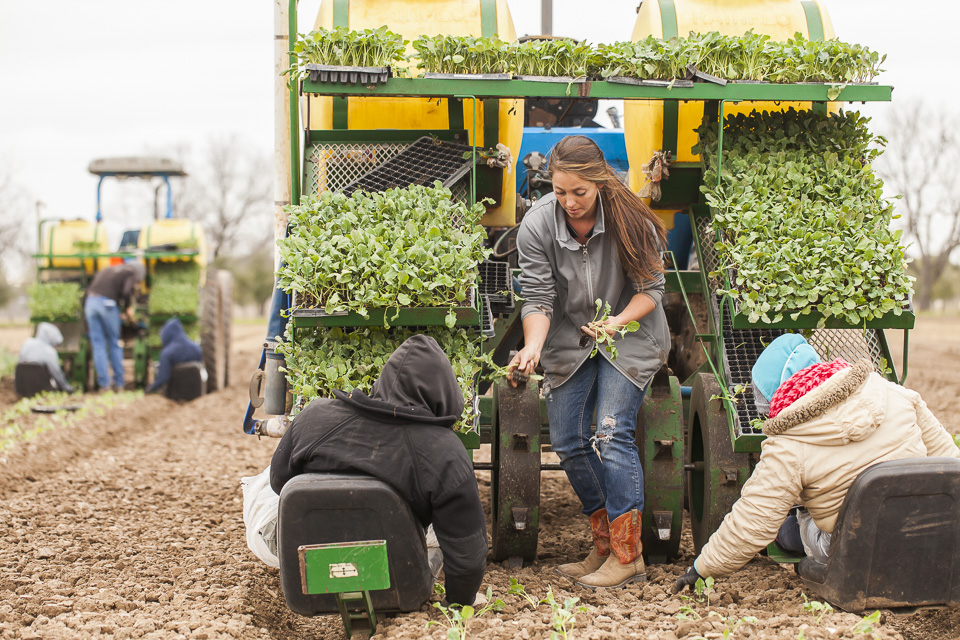 Rain-Flo transplanter. Photo by Scott David Gordon.
Rain-Flo transplanter. Photo by Scott David Gordon.
 Lannen transplanter. Photo by Scott David Gordon.
Lannen transplanter. Photo by Scott David Gordon.
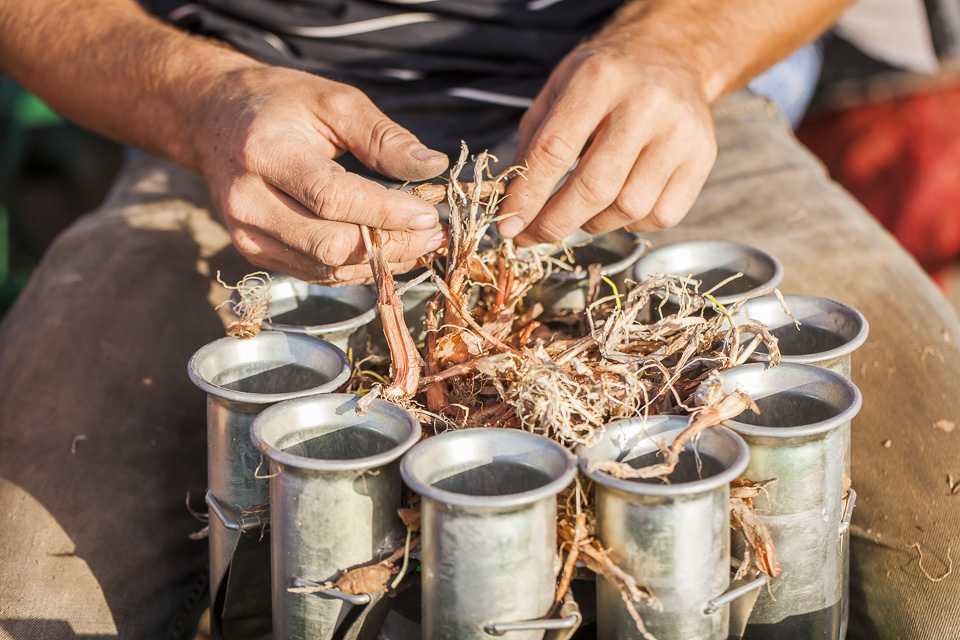 Lannen transplanter details. Photo by Scott David Gordon.
Lannen transplanter details. Photo by Scott David Gordon.
Then we have a specialized vacuum seeder, which allows us to precisely sow seeds in the exact spacing that we need on vast acreage. Most farms use hand pushed seeders, and can really take a lot of time. However, with the vacuum seeder, we can seed 50-100 beds a day!
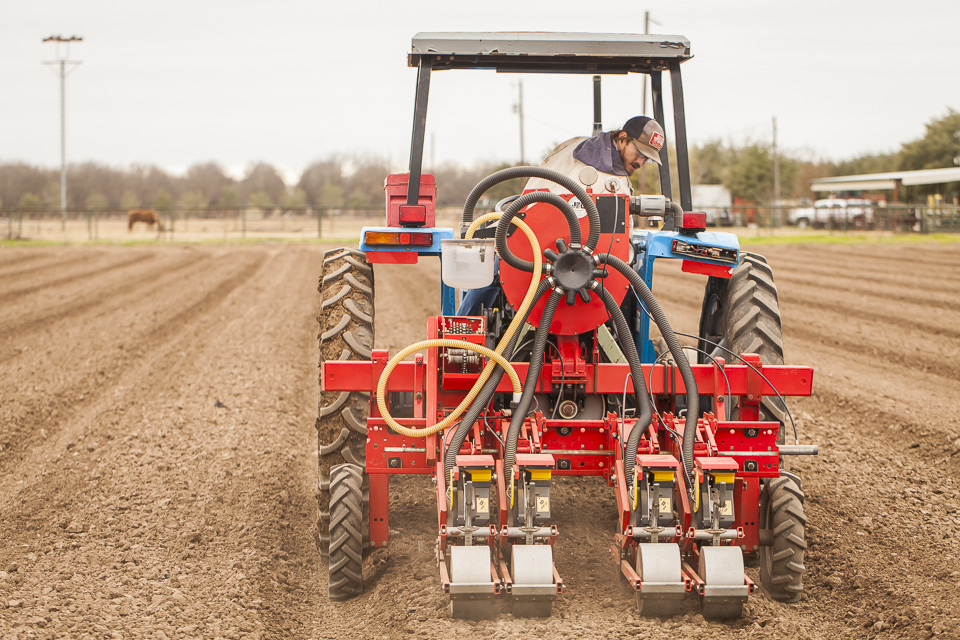 Vacuum seeder. Photo by Scott David Gordon.
Vacuum seeder. Photo by Scott David Gordon.
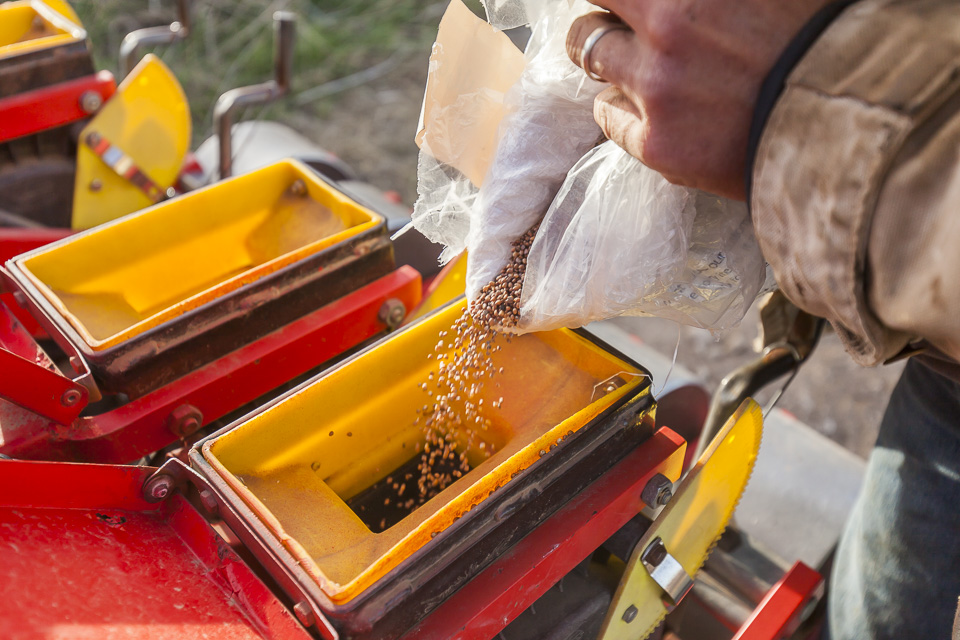 Vacuum seeder details. Photo by Scott David Gordon.
Vacuum seeder details. Photo by Scott David Gordon.
With bulk crops harvesting, we bring the bulk bins on forklifts out to the field and harvest straight into the bins. These bins go directly into the cooler after they are harvested. It saves time, gets the veggies more quickly into storage, and skips some unnecessary steps.
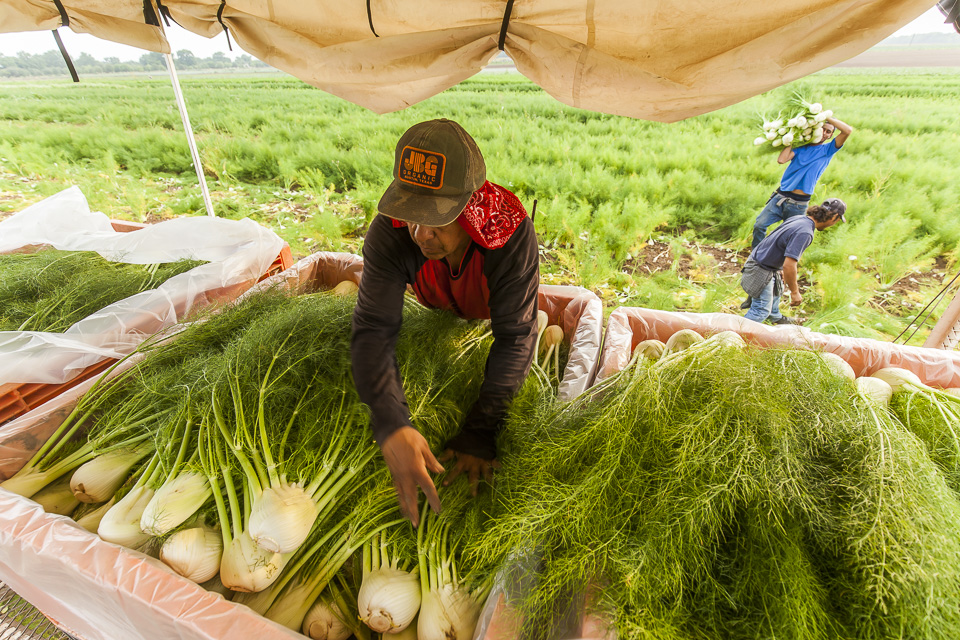 Bins at harvest. Photo by Scott David Gordon.
Bins at harvest. Photo by Scott David Gordon.
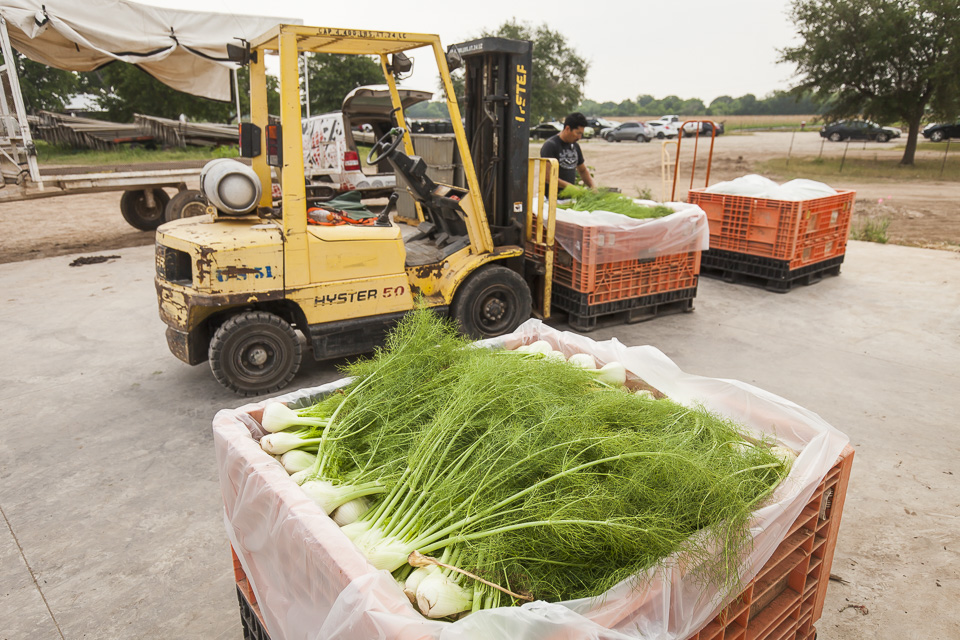 Moving towards the cooler. Photo by Scott David Gordon.
Moving towards the cooler. Photo by Scott David Gordon.
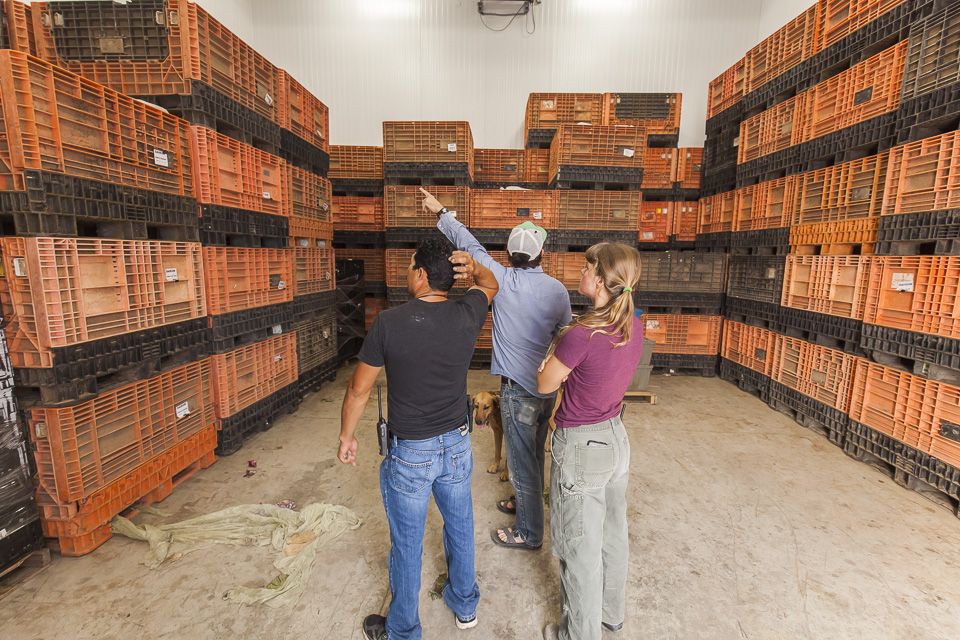 Cooler scene. Photo by Scott David Gordon.
Cooler scene. Photo by Scott David Gordon.
Little known fact: we have a full mechanic shop at the farm! This is kind of an anomaly for farms, to be at a scale where a full repair and mechanic shop is feasible. Our full-time mechanic, Tim, is a very creative, one-of-a-kind, and knowledgeable. Oftentimes, he finds unique solutions to daunting problems. Usually on farms, when something goes wrong with a tractor, it'll take a day or two to figure out the issue as most farmers aren’t mechanical experts. It also puts farmers way behind schedule as you can imagine. Plus, taking machinery to a tractor shop or hiring a mechanic to come to the farm can be very expensive. So, it’s special and very convenient to have someone on call and available to help us with our mechanical issues. With over 11 tractors, farm vehicles aplenty, plus implements, routine maintenance and repairs are constantly necessary. Tim is a really skilled professional and, thankfully, is able to work with our wide array of machines with ease. He’s been quite the asset for the past two years and we are grateful.
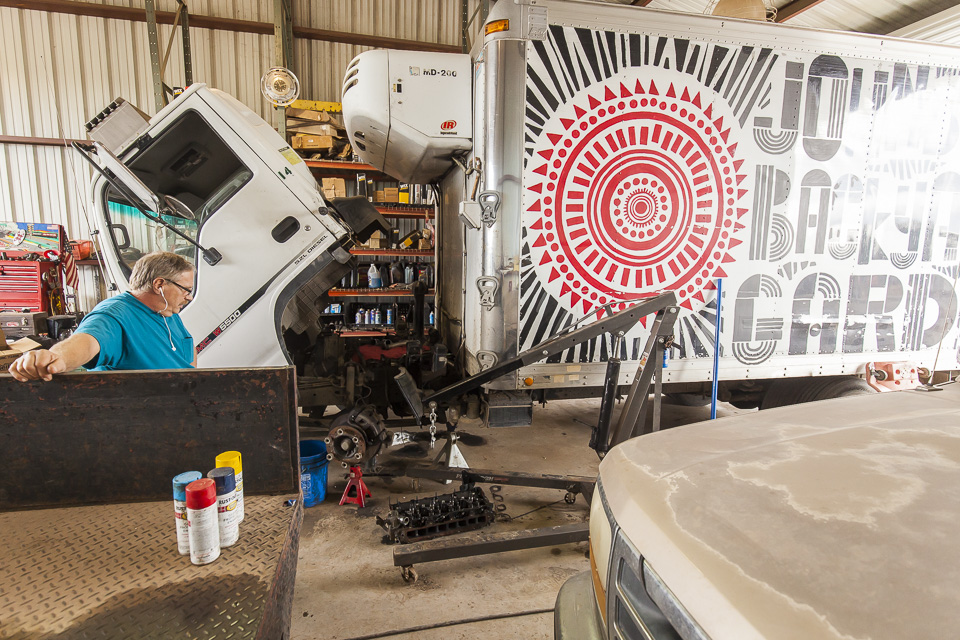 Tim checking out an engine situation. Photo by Scott David Gordon.
Tim checking out an engine situation. Photo by Scott David Gordon.
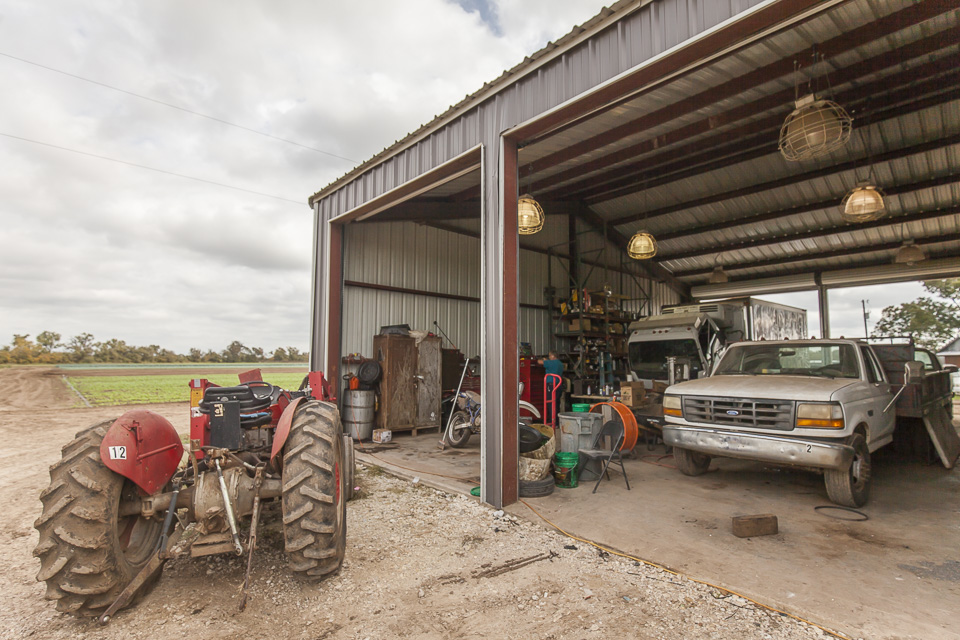 The shop. Photo by Scott David Gordon.
The shop. Photo by Scott David Gordon.
Montana, our direct seed lead, is in charge of sowing all of our direct seeded crops (which is roughly half of the crops at the farm). He works on bed preparation, dropping compost, and tillage with Angel, too. In the current system at the farm, we need a lot of redundancy, so if one person is swamped with something, another person can step in and help out. Tim can be up to his eyeballs in work, and Montana steps in and uses his mechanical knowledge (he worked as a mechanic in Pennsylvania before he became a full-time farmer, and has 6 ASE certifications!) to help in whatever tasks there are at hand. Montana is a great teacher, so he has trained folks on how to maintain certain vehicles, too.
 Montana working on an ABCO. Photo by Scott David Gordon.
Montana working on an ABCO. Photo by Scott David Gordon.
 Montana in the shop. Photo by Scott David Gordon.
Montana in the shop. Photo by Scott David Gordon.
Every year we innovate and become more efficient. Smart farming is about using your labor and resources well. ‘Til next time, folks!






 0 ITEMS IN CART
0 ITEMS IN CART 

